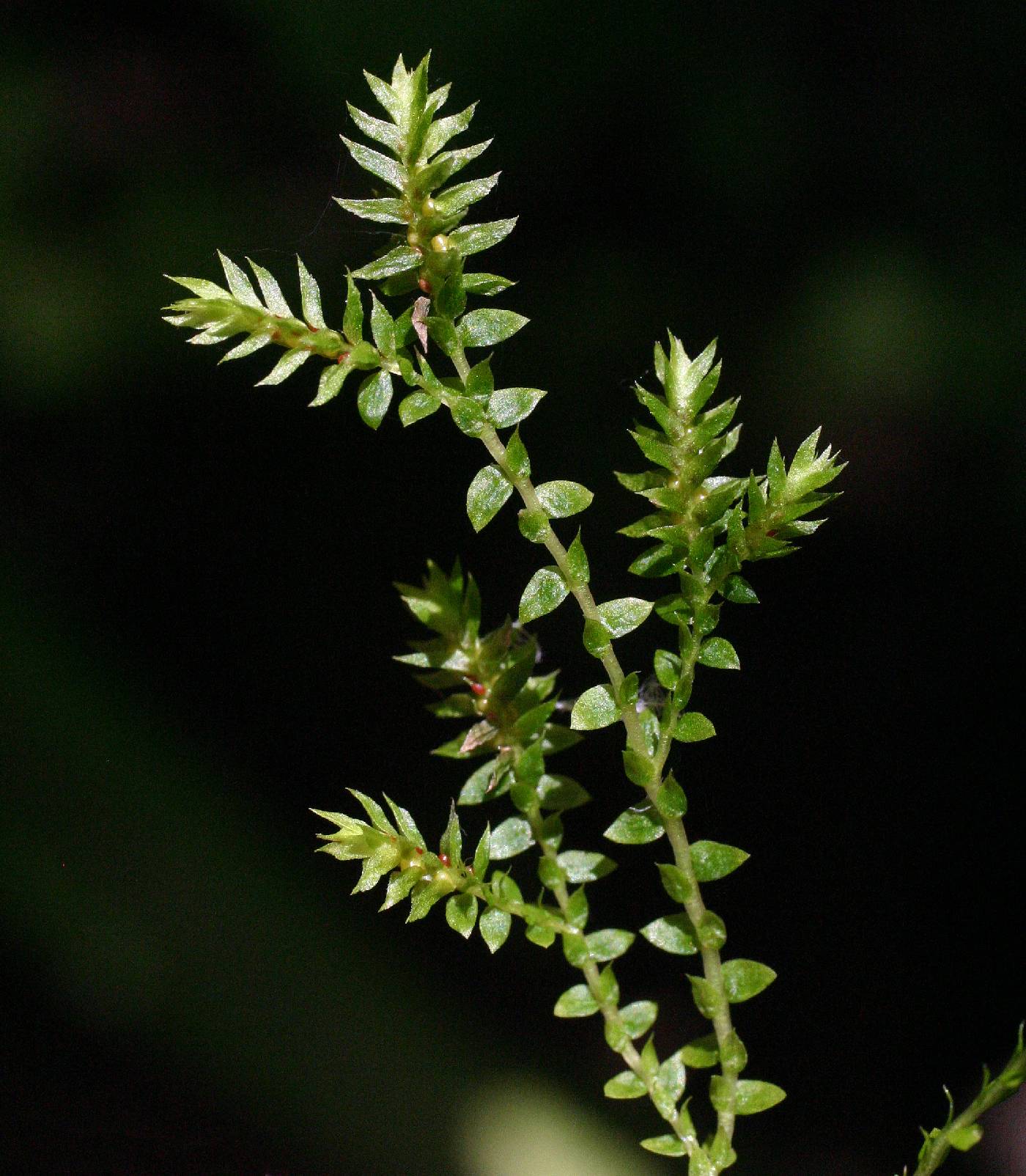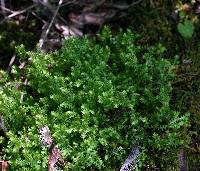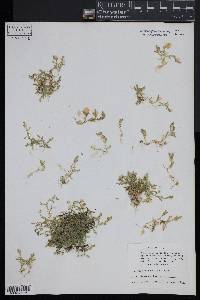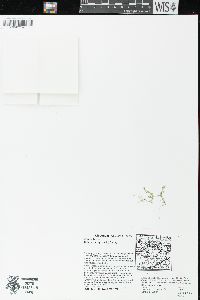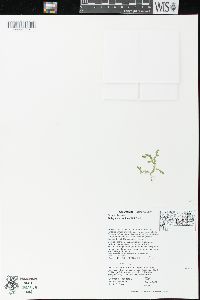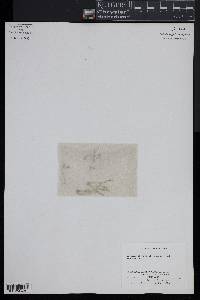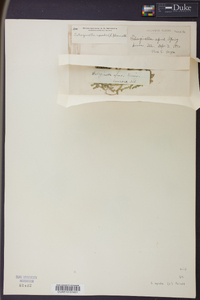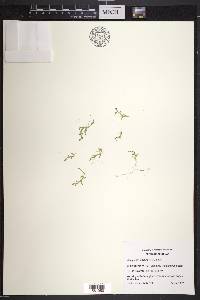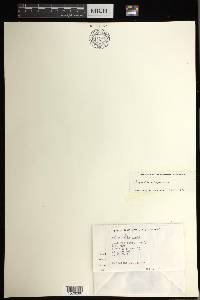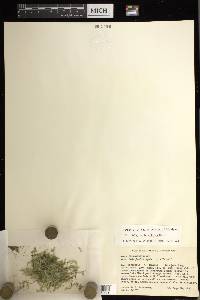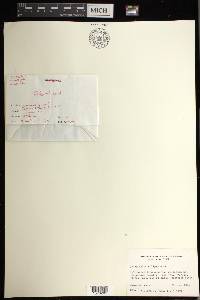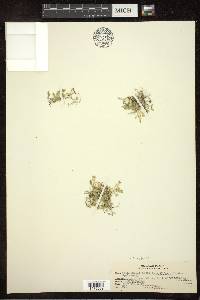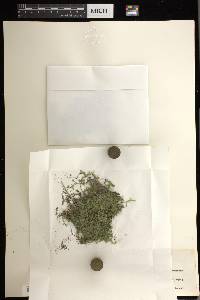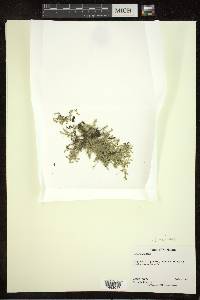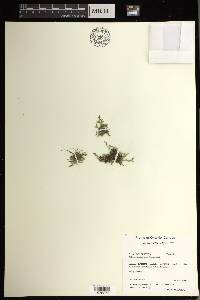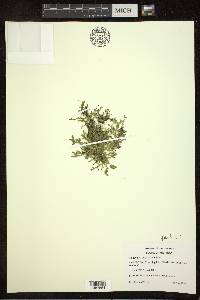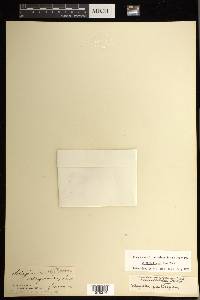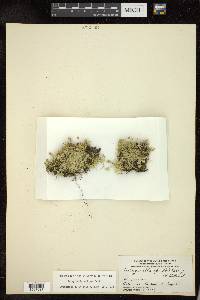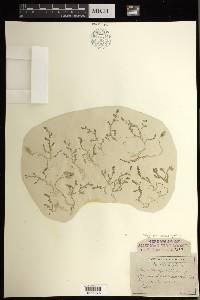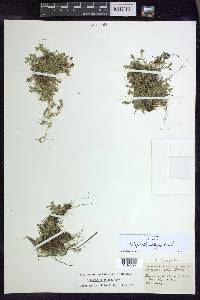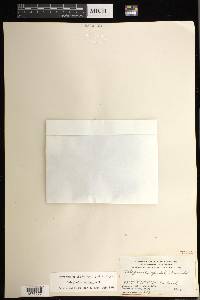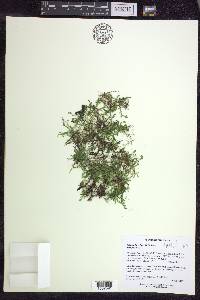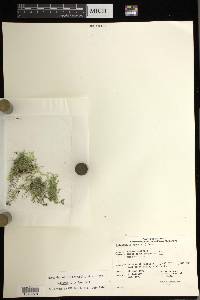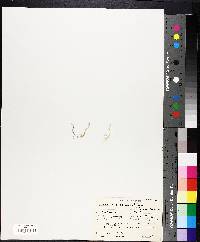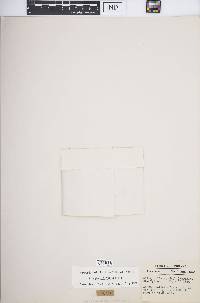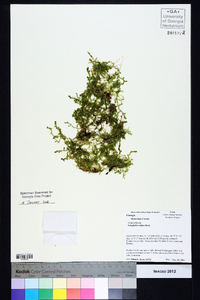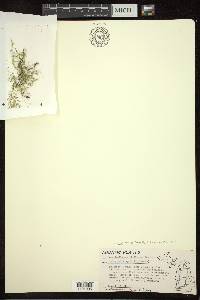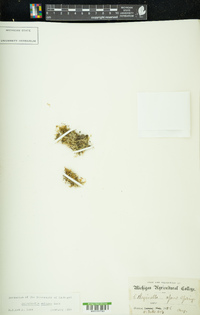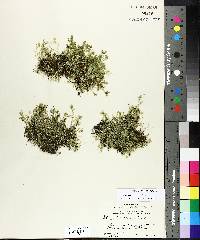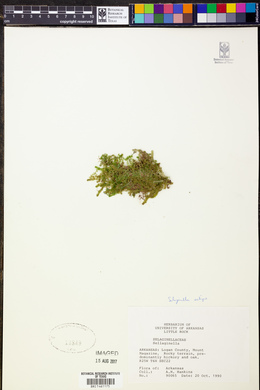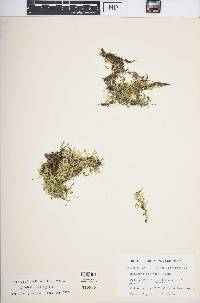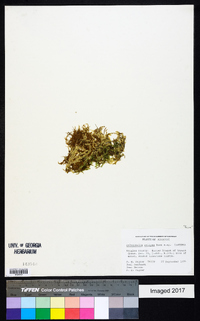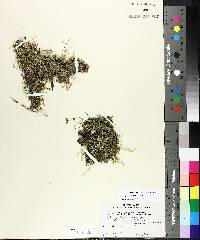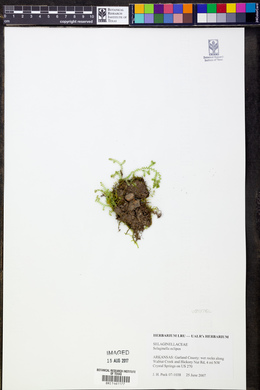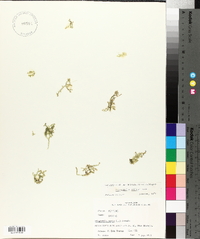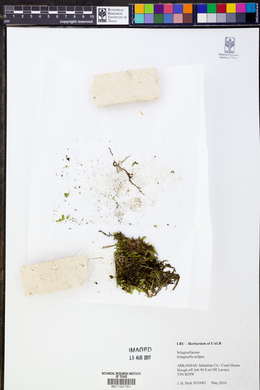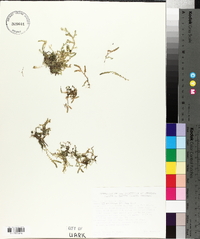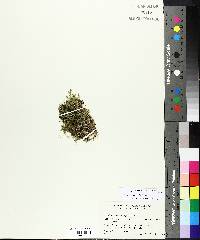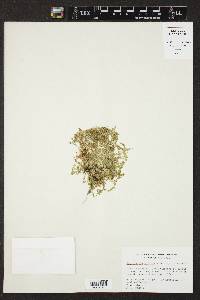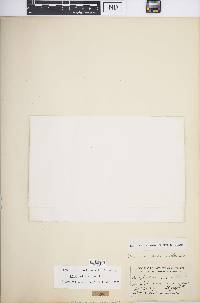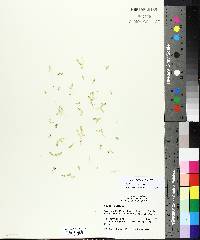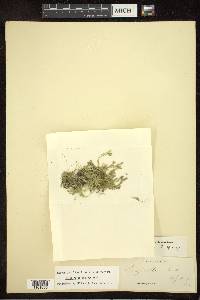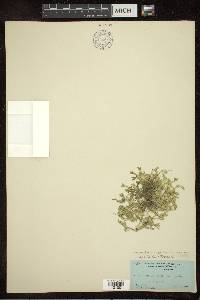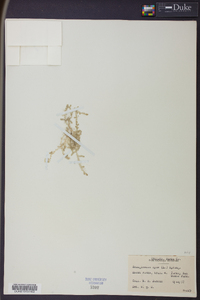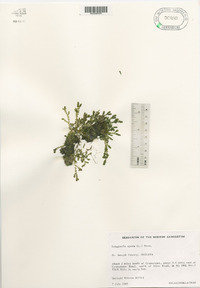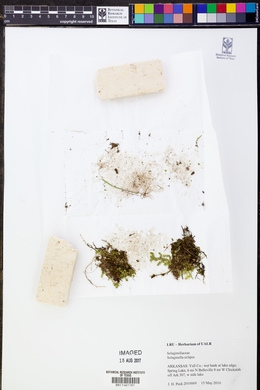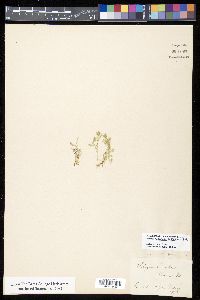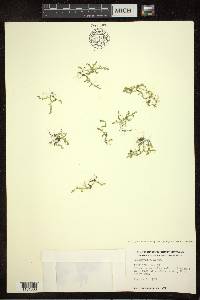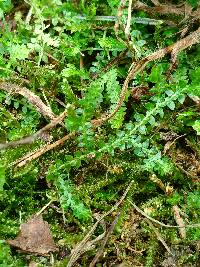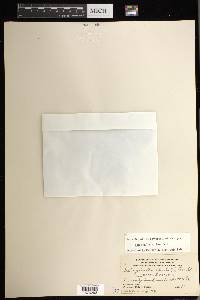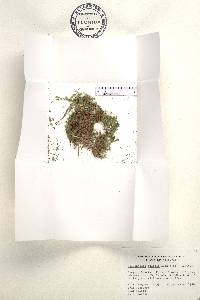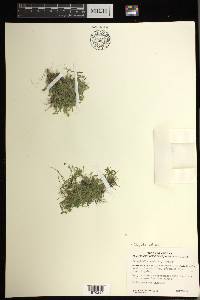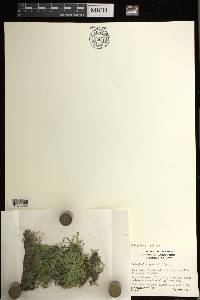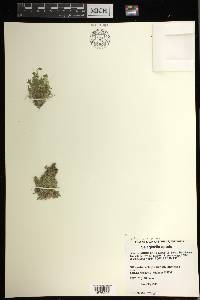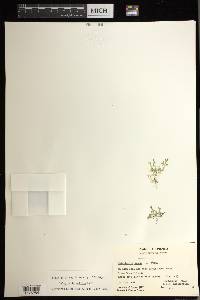Selaginella eclipes
|
|
|
|
Family: Selaginellaceae
Hidden Spike-Moss, more...Hidden Spik-Moss, hidden spikemoss
|
Plants terrestrial, forming loose to dense mats. Stems short-creeping, branched, branches 1--2-forked, flat, not articulate, glabrous. Rhizophores throughout stem length, 0.06--0.1 mm diam. Leaves papery, delicate. Lateral leaves nearly perpendicular to stem, green, ovate to ovate-elliptic, 1--2 X 0.5--1.3 mm; base rounded to slightly subcordate; margins slightly transparent, serrate; apex acute. Median leaves ovate to ovate-lanceolate or lanceolate, 1--1.8 X 0.4--0.8 mm; base rounded to oblique; margins green, serrate; apex abruptly tapered, long-acuminate to bristled, frequently transparent, midrib extending into apex. Strobili solitary or paired, lax, flattened, 1--4 cm; sporophylls ovate to ovate-deltate, strongly keeled, keel dentate, base glabrous, slightly cordate to rounded, margins serrate, apex acuminate; megasporophylls larger and wider than microsporophylls, usually on underside of strobili. Moist to wet, calcareous habitats, swamps, meadows, pastures, open woods, or rarely on rock; 0--100 m; Ont., Que.; Ark., Ill., Ind., Iowa, Mich., Mo., N.Y., Okla., Wis. Selaginella eclipes , a member of the S . apoda complex, may prove to be better treated as a subspecies of S . apoda (W. R. Buck 1977). It is recognized here at the specific level to highlight the problems within this species complex. Further research is needed to elucidate the relationships among the species of the complex.
Perennial fern ally 2 - 8 cm tall Stems: short-creeping, moss-like, leafy, hairless, branching, forming loose to dense mats with the flat branches forking one to two times. Roots: very short, very slender, hair-like, borne on modified, leafless, 0.06 - 0.1 mm diameter shoots (rhizophores) on the under or upper side of stems at branch forks. Sterile, vegetative leaves: stalkless, papery, delicate, of two distinct types (lateral and median) in four ranks (or lines) with some axillary leaves at branching points. The two ranks of lateral leaves are on each side of the stem, while the two median ranks are more along the topside of the stem. Fertile leaves are further different from these two types of sterile leaves. Lateral leaves: spreading, nearly perpendicular to stem, green with slightly transparent edges, 1 - 2 mm long, 0.5 - 1.3 mm wide, egg-shaped to more elliptic with toothed edges, rounded to slightly heart-shaped base, and pointed tip. Median leaves: appressed, ascending, green (even along the edges), 1 - 1.8 mm long, 0.4 - 0.8 mm wide, egg-shaped to lance-shaped with toothed edges, rounded or angled base, and abruptly narrowed apex with slender or bristled, often transparent tip, which is an extension of the midrib. Similar species: Selaginella eclipes is somewhat similar to S. rupestris, but the vegetative leaves of that species are all alike (in size and shape), thick, somewhat fleshy, firm, and not arranged in distinct ranks; there are no axillary leaves at the branching points; and the strobili (clusters of fertile leaves (sporophylls) holding the spore-producing sacs (sporangia)) are four-angled. The most similar species is S. apoda, which does not occur in our area, but differs by having a less narrow and shorter tip on the median leaves, or if narrowing then also having a lengthwise ridge (keel), but no extension of the midrib. Species of Selaginella are probably most often mistaken for a moss, but some may also confuse them with species in the Lycopodiaceae family. However, members of that family have their spore-bearing sacs (sporangia) borne singly in leaf axils, and those leaves are either the same as the vegetative leaves, or different, in which case they are aggregated into over 3 mm wide, cylindrical clusters located at the branch tips. Also, there is only one size of spore in the Lycopodiaceae family, and these are less than 50 microns in diameter. Habitat and ecology: Restricted to calcareous springy places. Occurence in the Chicago region: native Notes: Throughout the Selaginellaceae family, the classification is very confusing and controversial, even at the genus level. We follow the Flora of North America (1993), which places all species in the single genus Selaginella, and further breaks groups down into subgenera. This species, along with Selaginella apoda and S. ludoviciana, is part of a taxonomically complicated group in the subgenus Stachygynandrum called the Selaginella apoda complex. Many floristic manuals still lump the three species together under the name S. apoda. It has been suggested that perhaps this group is best treated in its own subgenus, Homostachys. Etymology: Selaginella is an old generic name meaning "resembling Selago", another moss-like plant. Eclipes is from the Greek ekleipo meaning "deficient". Author: The Field Museum |

